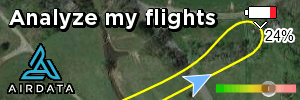Although I cannot purchase the MP5 in my country (US), the fact that it could be almost 4 grams heavier than the legal limit is really no concern. 4 grams over 250 grams is only 1.6 %. Although this is not a great analogy, this would be the equivalent of driving 101.6 km/h in a 100 km/h zone. Although this is technically illegal, from a realistic and practical aspect, this would rarely be pursued by law enforcement and governments. As others have pointed out, there would not only be questions about tolerances for the measuring device (scale) but there would be questions about how such a device would be accurately calibrated within that margin.
Except there are significant differences between sub 250g and 250g and over. If over 250g, the drone
must broadcast RID. If over 250g, you must also register yourself as a pilot, and put your pilot reg number on the drone.
Each one of those is a separate violation with additional maximum cumulative fines. Those are in addition to any other violations like flying VLOS, flying over people, or flying over a restricted area, or launching from a prohibited area.
You also can no longer defer to DJI for your safe harbor exemptions from both of those requirements when over 249.9 grams, as DJI has told you and everyone else that they cannot guarantee it will weigh less than 250g, and they are no longer putting the sub 250g labeling on the regular battery. It's now
your responsibility, if over 250g, to fly with a plus battery to broadcast RID, or attach an external RID module, and to register as a pilot with the FAA, and put that number on the outside of the drone.
So, even though it is at most
only 4g over, over is over, and true weight is indisputable with an accurately calibrated scale, unlike vehicle speed. An inquiring officer only needs to point to DJI's own statements, use his drug scale and find it over 250g, and seize the drone as evidence, where the true weight is to be determined later with a more accurate device. Much like a breathalyzer test in the field, to be corroborated by a later blood alcohol test, he can rely upon his scale/measurement device to issue a citation and seize the evidence for later prosecution by the FAA.
The safe alternative is to fly a
Mini 4 Pro with the regular battery which is guaranteed by DJI to be under 250g.
It's a personal choice. Those that are risk averse should fly the
Mini 4 Pro.
Those choosing to fly a M5P are willingly and knowingly assuming the risk, no matter how small or unlikely,
unless they can positively indisputably prove their own M5P with their regular battery is under 250g. Based upon all those who have weighed their M5P, they are outside the weight class, as the drones all appear to be "just a few grams" over, not under. The 2 gram speaker and screws inside is the likely culprit!











